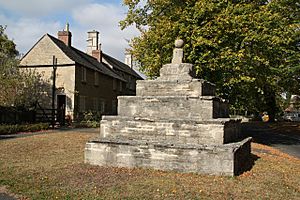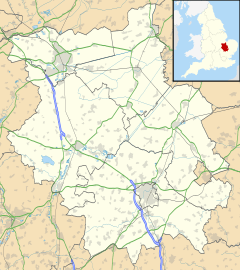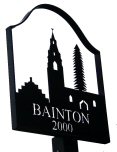Bainton, Cambridgeshire facts for kids
Quick facts for kids Bainton |
|
|---|---|
 Bainton village cross |
|
| Population | 290 |
| OS grid reference | TF094060 |
| Unitary authority |
|
| Ceremonial county | |
| Region | |
| Country | England |
| Sovereign state | United Kingdom |
| Post town | Stamford |
| Postcode district | PE9 |
| Dialling code | 01780 |
| Police | Cambridgeshire |
| Fire | Cambridgeshire |
| Ambulance | East of England |
| EU Parliament | East of England |
| UK Parliament |
|
Bainton is a small village in Cambridgeshire, England. It is part of the Peterborough area. Bainton is located on the southern edge of the Welland valley. It is about 7.4 miles (11.9 km) north-west of Peterborough. The village is also 4 miles (6.4 km) east of Stamford.
A nearby small settlement called Ashton is about 1 mile (1.6 km) south-east of Bainton. Both are part of the same local area, known as a civil parish. In 2001, about 305 people lived in Bainton. By 2011, the population was 290 people. In 2021, it grew to 330 people.
Contents
A Look Back in Time: Bainton's History
What's in a Name?
Bainton was once known as 'Badingtun'. This Old English name means "estate associated with a man called Bada." A settlement, or group of homes, existed here around the year 980. However, Bainton was not mentioned in the Domesday Book of 1086. The Domesday Book was a huge survey of England. It was ordered by William the Conqueror to record land and property.
Ancient Sites Near Bainton
Close to Bainton, near the village of Helpston, is a special historical site. It is called Torpel Manor. This site has old earthworks, which are shapes made in the ground. These earthworks date back to the Middle Ages and later. Torpel Manor is a Scheduled Ancient Monument. This means it is a nationally important archaeological site. It is protected by law.
Important Old Buildings
Bainton has some very old and important buildings. The medieval village cross is called the Butter Cross. It is a Grade I listed building. This means it is a building of exceptional historical interest. The village church, St Mary's, is also Grade I listed.
The church of St Mary was built in the early 1200s. Later additions, like the tall tower and spire, were built in the 1300s. Inside the church, there is a monument. It was made by a famous artist, Sir Richard Westmacott. This monument honors Mary Henson, who passed away in 1805. The church's bell tower has four bells. However, they cannot be rung at the moment.
Bainton House is another historic building. It used to be the home of the Birkbeck family. This house is a Grade II listed manor house. A manor house is a large country house. Bainton House dates back to the 1500s.
Getting Around Bainton
Bainton is located on the B1443 road. This road helps people travel to and from the village.
In the past, Bainton had its own train station. It was called Bainton Gate railway station. This station served the village for a short time, from 1846 to 1856. Today, the closest train station is in Stamford. It is about 4 miles (6.4 km) west of Bainton.



